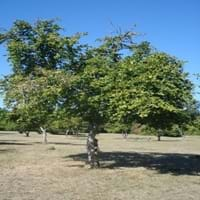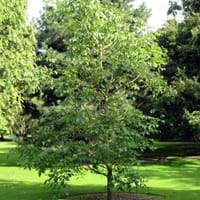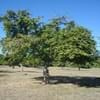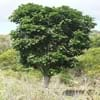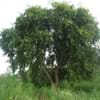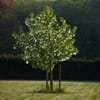Life Span
Perennial
Perennial
Origin
Europe, Northern Africa, Western Asia
Asia, Europe, North America
Types
Common Hazel, Asian Hazel, Beaked Hazel
Black Ash, Blue Ash, California Ash, Carolina Ash, European Ash
Number of Varieties
Not Available
Habitat
Deciduous forests, Terrestrial
Forest edges, Hillside, Woods
USDA Hardiness Zone
4-8
3-9
Sunset Zone
2a, 2b, 3a, 3b, 4, 5, 6, 7, 8, 9, 14, 15, 16, 17, 18, 19, 20
9, 12, 13, 14, 15, 16, 17, 18, 19, 20, 21, 22, 23, 24
Habit
Oval or Rounded
Oval or Rounded
Flower Color
Yellow
White
Flower Color Modifier
Bicolor
Not Available
Fruit Color
Brown
Not Available
Leaf Color in Spring
Green
Dark Green
Leaf Color in Summer
Green, Dark Green
Dark Green
Leaf Color in Fall
Yellow, Green, Brown
Dark Green
Leaf Color in Winter
Not Available
Dark Green
Leaf Shape
Heart-shaped
Oblovate
Plant Season
Spring, Summer, Fall
All year
Sunlight
Full Sun, Partial Sun
Full Sun, Part sun
Type of Soil
Clay, Loam, Sand
Loamy, Sandy
The pH of Soil
Neutral, Alkaline
Acidic
Soil Drainage
Average
Well drained
Bloom Time
Early Spring, Spring, Late Winter
Late Spring, Spring
Tolerances
Drought
Drought, Pollution, Soil Compaction
Where to Plant?
Ground
Ground
How to Plant?
Grafting, Micropropagation, Seedlings, Tip Layering
Grafting, Seedlings, Stem Planting, Transplanting
Plant Maintenance
Medium
Medium
Watering Requirements
Requires watering in the growing season
Does not require lot of watering, Medium, Prefer drip-irrigation instead of Over-head watering
In Summer
Lots of watering
Lots of watering
In Spring
Moderate
Moderate
In Winter
Average Water
Average Water
Soil pH
Neutral, Alkaline
Acidic
Soil Type
Clay, Loam, Sand
Loamy, Sandy
Soil Drainage Capacity
Average
Well drained
Sun Exposure
Full Sun, Partial Sun
Full Sun, Part sun
Pruning
Prune in early spring
Prune in winter, Prune prior to new growth
Fertilizers
Less fertilizing
All-Purpose Liquid Fertilizer
Pests and Diseases
Anisogramma anomalae, Armillaria mellea, Curculio occidentis, Phyllactinia guttata
Bark splits, Crown gall, Epicormic Sprouting, Woodpecker feeding
Plant Tolerance
Drought
Drought
Flower Petal Number
Not Available
Single
Foliage Texture
Coarse
Medium
Foliage Sheen
Matte
Glossy
Invasive
Sometimes
Sometimes
Attracts
Not Available
Birds
Allergy
Diarrhea, Hay fever, Mouth itching, Rhinoconjunctivitis, Swelling in mouth, Throat itching, Vomiting
Not Available
Aesthetic Uses
Used for making hedges
Not Available
Beauty Benefits
Acne, For treating wrinkles, Good for skin and hair
Not Available
Environmental Uses
Air purification
Air purification
Medicinal Uses
Anthelmintic, Astringent, Diaphoretic, Febrifuge, Miscellany, Nutrients, Stomachic, Tonic
Fever, Liver problems
Part of Plant Used
Bark, Catkins, Fruits, Leaves
Leaves, Stem
Other Uses
Basketary, Charcoal, Cosmetics, For making oil
Used as Ornamental plant
Used As Indoor Plant
No
No
Used As Outdoor Plant
Yes
Yes
Garden Design
Edible, Foundation, Fruit / Fruit Tree, Hedges, Mixed Border, Screening / Wind Break
Shady Tree, Showy Tree
Botanical Name
CORYLUS avellana
Fraxinus
Common Name
European Filbert, Filbert, Harry Lauder's Walking Stick, Hazelnut
Ash Tree
In Hindi
Hazelnut
राख पेड़
In German
Haselnuss
Esche
In Spanish
Avellana
Fresno
In Greek
Φουντούκι
δέντρο Ash
In Portuguese
Avelã
Freixo
In Polish
Orzech laskowy
Jesion
In Latin
Hazelnut
Fraxinum
Phylum
Tracheophyta
Anthophyta
Class
Magnoliopsida
Magnoliopsida
Family
Betulaceae
Oleaceae
Clade
Angiosperms, Eudicots, Rosids
Angiosperms, Asterids, Eudicots
Subfamily
Coryloideae
Not Available
Importance of Hazelnut and Ash Tree
Want to have the most appropriate plant for your garden? You might want to know the importance of Hazelnut and Ash Tree. Basically, these two plants vary in many aspects. Compare Hazelnut and Ash Tree as they differ in many characteristics such as their life, care, benefits, facts, etc. Every gardener must at least have the slightest clue about the plants he wants to plant in his garden. Compare their benefits, which differ in many ways like facts and uses. The medicinal use of Hazelnut is Anthelmintic, Astringent, Diaphoretic, Febrifuge, Miscellany, Nutrients, Stomachic and Tonic whereas of Ash Tree is Fever and Liver problems. Hazelnut has beauty benefits as follows: Acne, For treating wrinkles and Good for skin and hair while Ash Tree has beauty benefits as follows: Acne, For treating wrinkles and Good for skin and hair.
Compare Facts of Hazelnut vs Ash Tree
How to choose the best garden plant for your garden depending upon its facts? Here garden plant comparison will help you to solve this query. Compare the facts of Hazelnut vs Ash Tree and know which one to choose. As garden plants have benefits and other uses, allergy is also a major drawback of plants for some people. Allergic reactions of Hazelnut are Diarrhea, Hay fever, Mouth itching, Rhinoconjunctivitis, Swelling in mouth, Throat itching and Vomiting whereas of Ash Tree have Not Available respectively. Having a fruit bearing plant in your garden can be a plus point of your garden. Hazelnut has no showy fruits and Ash Tree has no showy fruits. Also Hazelnut is not flowering and Ash Tree is flowering. You can compare Hazelnut and Ash Tree facts and facts of other plants too.
